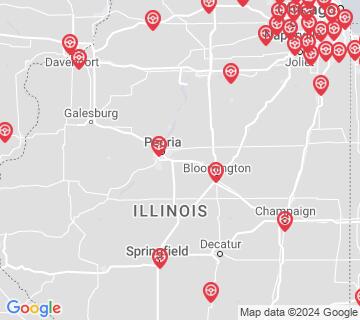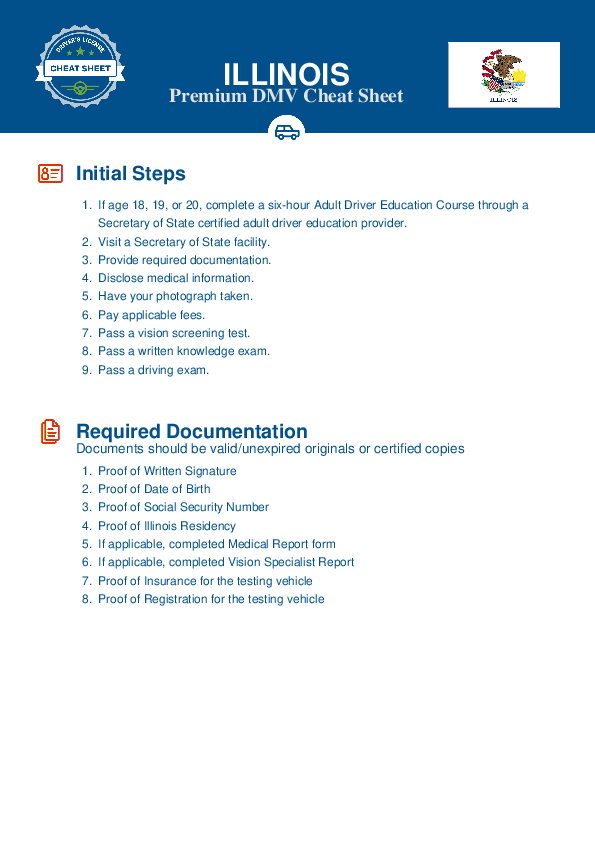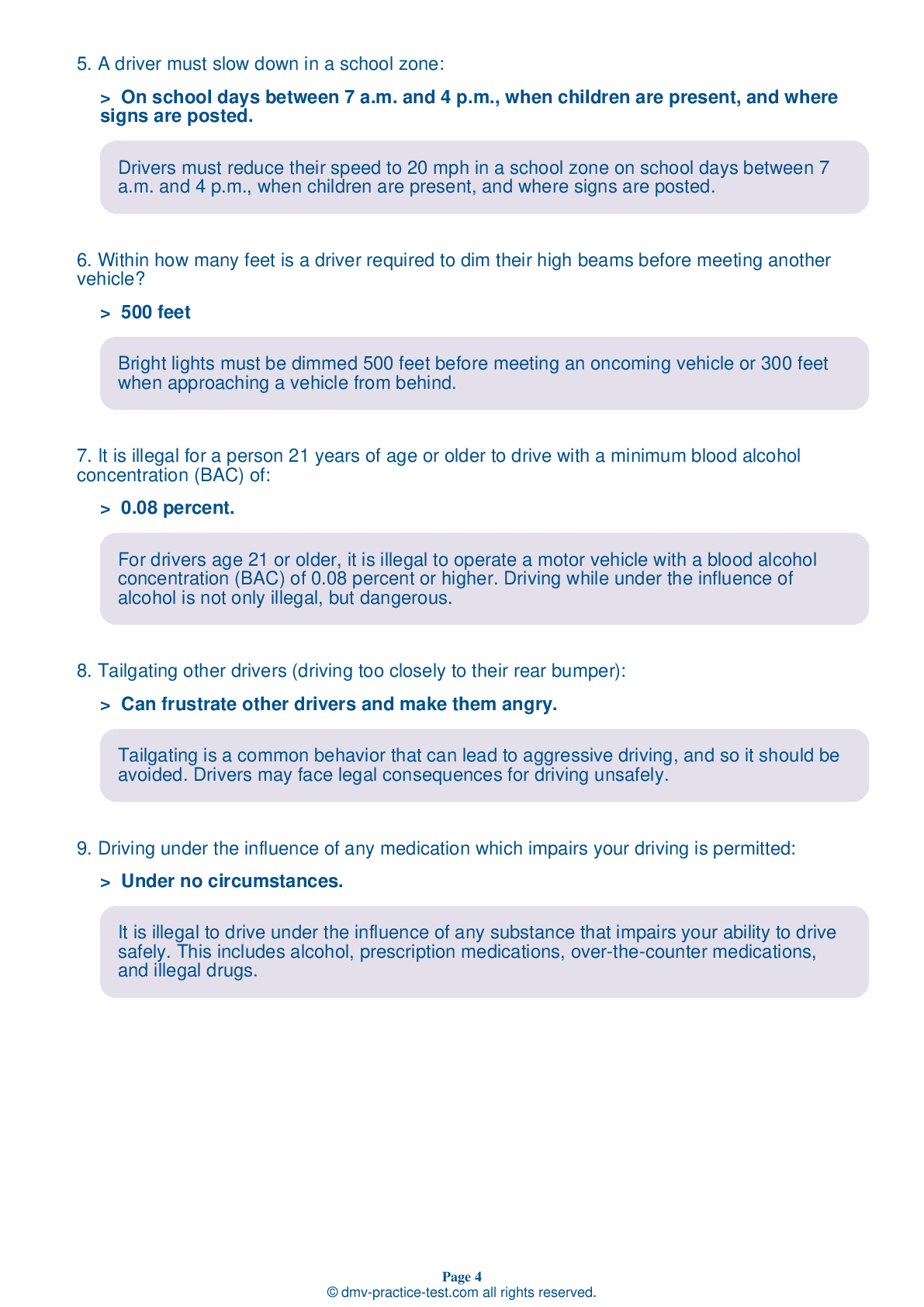FREE Illinois DMV Practice Test #1 Page 3 of 3
For January 2025, this set of Illinois DMV practise tests has been updated. It includes questions based on the most important traffic signs and rules for 2025 from the Illinois Driver Handbook. To study for the DMV driving permit test and driver's licence exam, use actual questions that are very similar (often identical!) to the DMV driving permit test and driver's licence exam.
Each question on the practise exam has a tip and explanation to help you recall the ideas. Questions about traffic rules, traffic signs, and driving statutes, as well as information from the Driver Handbook, will be included in the written portion of the official DMV test.
You must properly answer 38 of the 35 questions to receive a passing mark. To help you prepare for your Illinois instruction permit or driver's licence, take our DMV practise test.
The DMV exam is offered in a variety of languages.
Using any form of testing help will result in an automatic fail, and the DMV may take further action against your driver's licence, so avoid it.
25 . You want to make a right turn at the corner. A pedestrian with a guide dog is at the corner ready to cross the street in front of you. Before making your right turn, you should:
Pedestrians using guide dogs or white canes (with or without a red tip) must be given the right-of-way at all times.
26 . How should a driver proceed if, while within an intersection waiting to make a left turn, the traffic signal light turns red?
If driver making a left turn enters an intersection while the light is green, they may finish the turn even after the light turns red.
27 . This road sign means:

Warning signs are usually yellow with black markings. This sign warns drivers that they are arriving upon a fork in the road and they must bear either right or left.
28 . The three-second rule helps the driver determine a safe following distance.
In general, you should use the three-second rule to determine a safe following distance.
29 . This sign means:

Warning signs are usually yellow with black markings. They alert you to conditions that are immediately ahead. These signs may be accompanied by speed advisory plaques that indicate the speed with which you should proceed.
30 . This sign means:
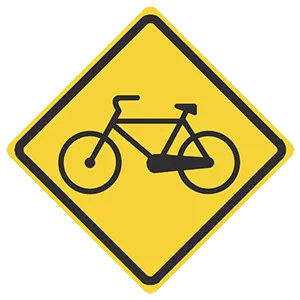
Warning signs are usually yellow with black markings. Warning signs may alert drivers to areas where animals, people, and vehicles are likely to cross traffic.
31 . This sign means:
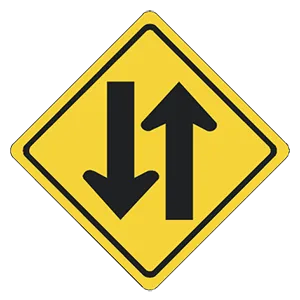
This sign informs drivers that they are leaving a divided roadway and approaching a two-way highway.
32 . Give the right-of-way to any pedestrian who is:
Drivers must yield the right-of-way to pedestrians who are crossing the street in any marked or unmarked crosswalk. In the interest of safety, drivers should yield the right-of-way to people crossing any street.
33 . What is the only effective way to remove alcohol from the body?
The only way to remove the effects of alcohol from the body is to let time pass. Eating, drinking coffee, or taking a shower will not speed up this process.
34 . Before returning to your original lane after passing another vehicle, you should:
When passing is permitted, look for both headlights of the passed vehicle in your rearview mirror. Only then may you safely return to your original lane.
35 . This sign means:

